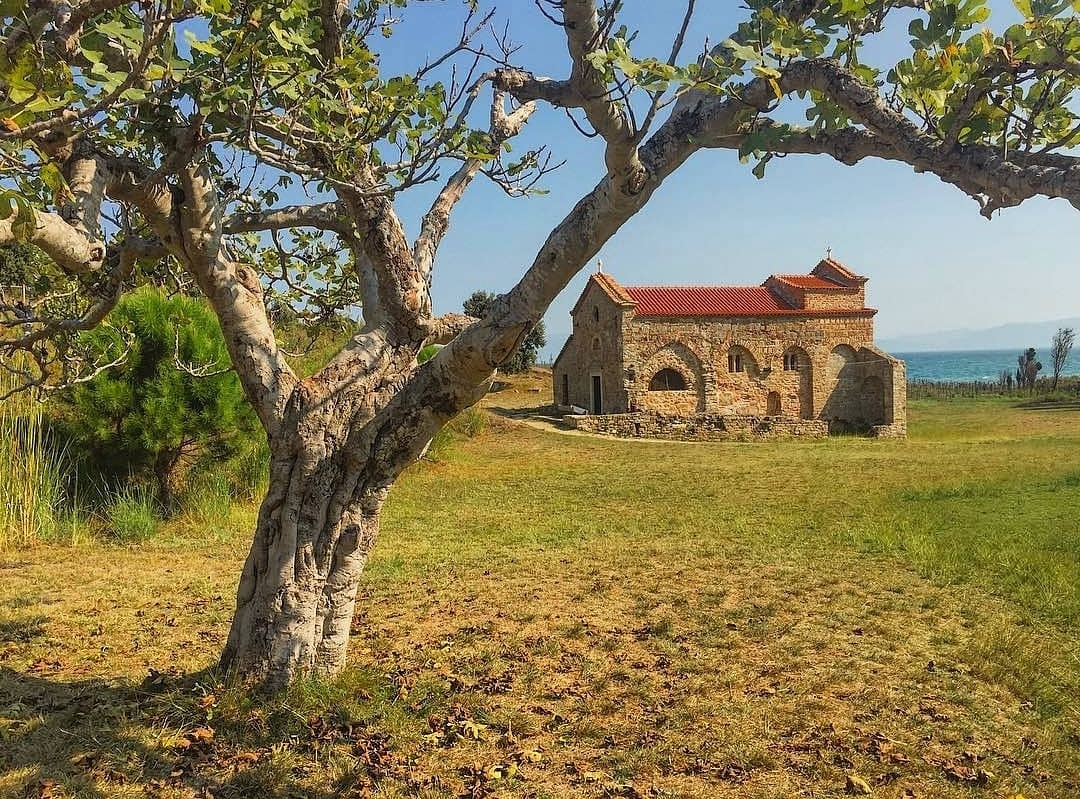Key Takeaways
- Rodoni Castle ruins provide a unique window into Albania’s medieval past and national resistance.
- The castle was built by Skanderbeg in 1452, serving as a strategic coastal fortress.
- Its architecture blends Albanian and Venetian styles, with features like towers and a sacred chapel.
- The site today offers stunning views of the Adriatic Sea and an engaging exploration of history and nature.
- Preservation challenges include coastal erosion, environmental wear, and limited resources, but ongoing efforts aim to safeguard it for future generations.
Table of contents
- Historical Background of Rodoni Castle
- Architectural Features of Rodoni Castle Ruins
- Exploring Rodoni Castle Ruins Today
- Cultural and Tourism Importance
- Preservation Efforts and Challenges
- Practical Information for Visitors
- Conclusion
Historical Background of Rodoni Castle
Nestled on the scenic Cape of Rodoni, the castle was constructed in 1452 by the legendary Skanderbeg, Albania’s national hero. Its primary purpose was to serve as a coastal fortress and a strategic retreat against Ottoman invasions. During the tumultuous period of the Ottoman-Albanian wars, Rodoni Castle played a crucial role as a defense stronghold, symbolizing Albanian resilience.
In 1467, the castle was briefly captured by Ottoman forces, but Skanderbeg’s efforts led to its rebuilding, reinforcing its importance as a symbol of resistance. Throughout history, it was more than a military installation; it was a hub for strategy and hope for the Albanian people. Its commanding position along the coastline allowed defenders to monitor approaching enemies and defend the shoreline effectively.
“Rodoni Castle epitomizes Albania’s enduring spirit—the resilience that refused to yield in the face of conquering forces.”
Today, the ruins stand as a powerful reminder of Albania’s fight for independence and sovereignty, honoring the leadership of Skanderbeg and the bravery of those who defended their homeland.
Architectural Features of Rodoni Castle Ruins
The Rodoni Castle ruins reflect a blend of Albanian and Venetian architectural influences, showcasing the region’s historical connections. Originally designed as a rectangular fortress, it included robust stone walls, corner towers, and defensive battlements designed to withstand sieges.
Among the notable features was the small chapel dedicated to Saint Anthony. Although only the foundation remains, it offers insight into the multifunctional nature of the castle, integrating both spiritual and military needs. The presence of religious structures highlights the daily life and cultural importance religion held within the fortress.
Remaining sections of walls and towers offer a glimpse into medieval construction prowess. The weathered stones exemplify craftsmanship, and the layout indicates strategic planning—placing vantage points for surveillance while seamlessly integrating into the natural landscape of rocky cliffs and sea vistas.
Unique Architectural Traits
The castle’s placement on Cape Rodoni maximized defensive advantage, with the rocky cliffs providing natural protection. The design showcases an aesthetic harmony, blending functionality with natural beauty—a hallmark of medieval fortification architecture.
Exploring Rodoni Castle Ruins Today
Today, the Rodoni Castle ruins offer a captivating experience, inviting visitors to walk among remnants of history while enjoying the stunning Adriatic coastline. You can explore stone walls, tall towers, and the base of the castle’s chapel, each telling stories of bygone days.
The panoramic views of the azure sea and rugged cliffs create a picturesque setting perfect for sightseeing, photography, and reflection. The peaceful environment offers a retreat from modern life, allowing visitors to immerse themselves in Albania’s historical and natural beauty.
Accessible by car, the site is best visited during spring or fall when the weather is mild and the scenery is vibrant. Guided tours are highly recommended to gain deeper insights into the castle’s history and its significance during Skanderbeg’s time. Local guides share stories and details that bring the ruins to life, enriching your understanding of this historic site.
Practical tips include wearing comfortable footwear, bringing water, sun protection, and capturing the breathtaking views. The surrounding Cape Rodoni area also features other attractions like charming coastal villages and scenic viewpoints, making for a memorable day trip.
Cultural and Tourism Importance
The Rodoni Castle ruins are integral to Albanian cultural tourism, embodying a vital part of the nation’s history and identity. As a symbol of Skanderbeg’s legacy and early resistance, it attracts visitors eager to learn about Albania’s medieval past and resilience.
The site fosters a sense of national pride and serves as an outdoor educational resource for locals, students, and researchers. It illustrates strategies of defense and resilience and brings history alive through tangible ruins.
Throughout the year, cultural events and heritage festivals are organized at the site, featuring traditional music, dance, reenactments, and storytelling. These festivities promote cultural preservation and community involvement, boosting local economy and tourism.
Additionally, Rodoni Castle contributes to Albania’s broader tourism appeal by linking historical exploration with natural beauty—nearby coastal spots, traditional villages, and scenic landscapes create a full cultural and experiential package.
Preservation Efforts and Challenges
Protecting the Rodoni Castle ruins is vital for preserving Albania’s historic legacy, but it faces multiple challenges. Natural elements like coastal erosion, wind, and salty air accelerate deterioration, especially since resources for restoration are limited.
Coastal erosion continuously threatens structural stability, wearing away stones and damaging foundations. The weathering process is rapid due to environmental conditions, requiring ongoing conservation efforts.
Human activities, including vandalism and unauthorized construction, exacerbate deterioration. Ensuring visitors respect the site through education and signage is crucial for preservation. Local authorities and international organizations are working to secure funding and implement protective measures, such as stabilization of walls and controlled access zones.
Future plans involve forming collaborations with heritage experts, increasing awareness, and developing proper visitor facilities to reduce impact. International support and sustainable tourism strategies are essential to the long-term preservation of Rodoni Castle.
Practical Information for Visitors
To visit the Rodoni Castle ruins, travelers can take routes from Tirana or Durrës via the E852 or SH32 highways, followed by a short walk to the site. The site is easily accessible by car or organized tours.
When exploring, wear sturdy shoes suitable for uneven terrain, and bring water, sun protection, and a camera. Visiting during spring or fall offers pleasant weather and vibrant scenery.
Guided tours provide deeper insights into the castle’s history, with local guides offering stories about Skanderbeg and the site’s strategic role. Nearby villages and the Cape itself offer additional attractions like traditional cuisine and scenic viewpoints.
Always remember to respect the ruins and follow safety guidelines to prevent damage and ensure your safety. Local tourist offices and travel agencies can assist with maps, transportation options, and tour bookings for a smooth visit.
Conclusion
The Rodoni Castle ruins stand as a powerful symbol of Albania’s medieval heritage, resilience, and strategic ingenuity. As a creation of Skanderbeg’s leadership, it embodies the enduring spirit of resistance that shaped the nation’s history. Exploring the ruins provides a meaningful connection to Albania’s past, complemented by breathtaking natural scenery along the Adriatic coast.
Protecting and preserving this historic site is essential for future generations to understand and appreciate Albania’s rich cultural identity. Ongoing efforts to combat environmental and human threats must be supported through awareness, education, and international collaboration. Promoting responsible tourism ensures that Rodoni Castle remains a cherished landmark and an inspiring symbol of national pride.
We invite you to visit the majestic ruins of Rodoni Castle, experience its historical significance firsthand, and contribute to its preservation — a lasting tribute to Albania’s vibrant past and promising future.


0 Comment